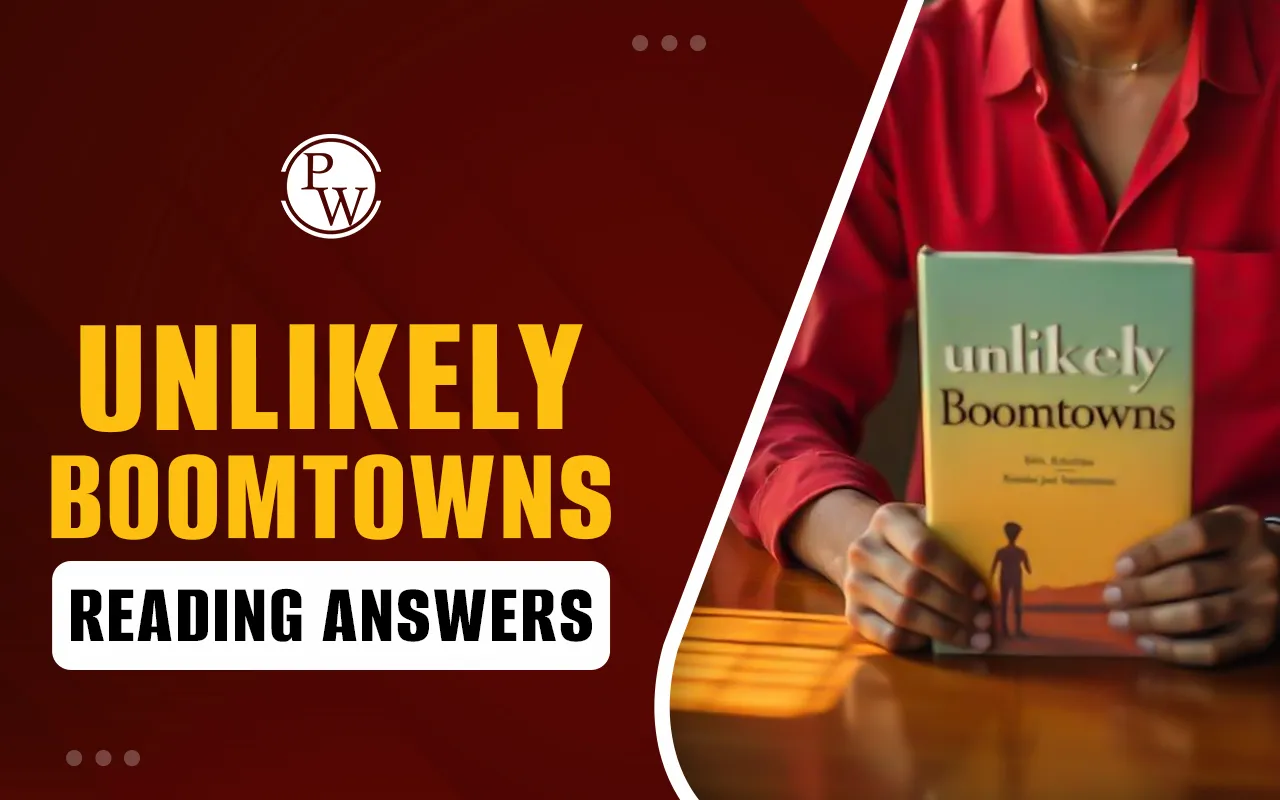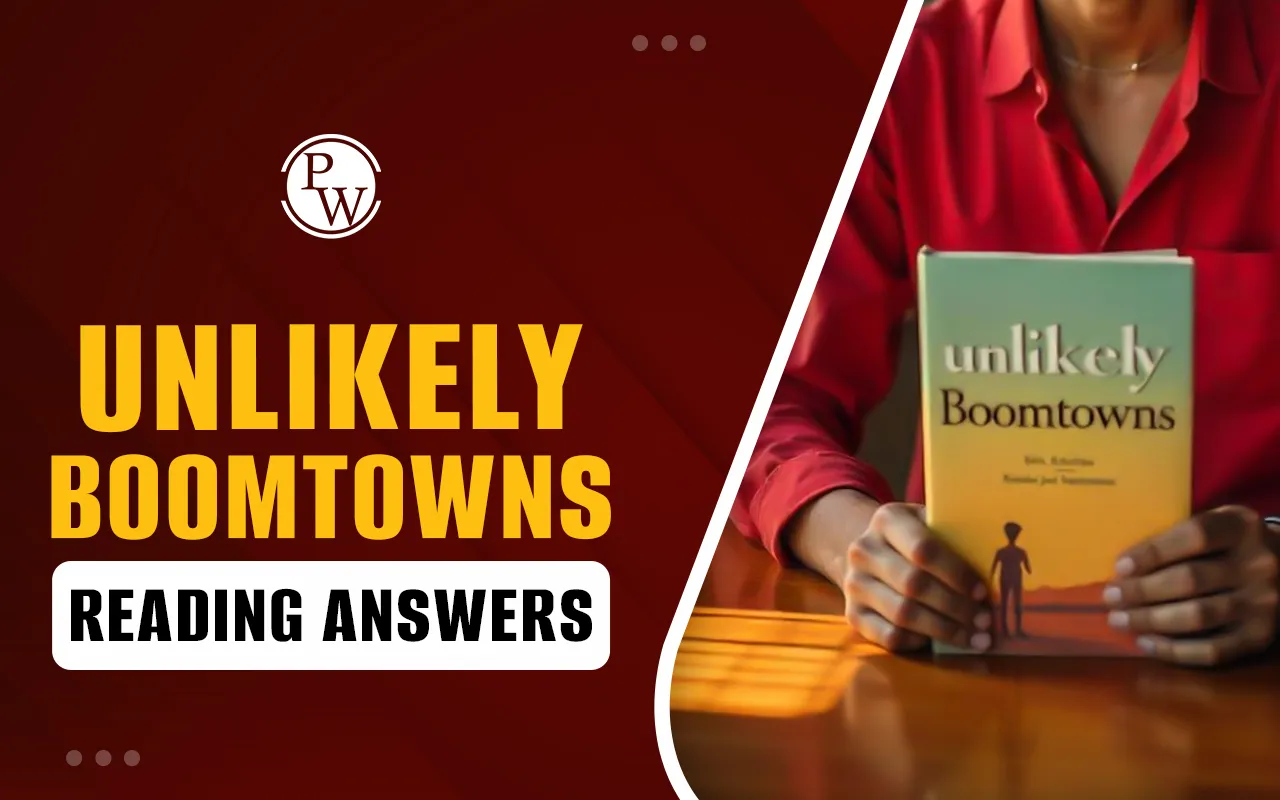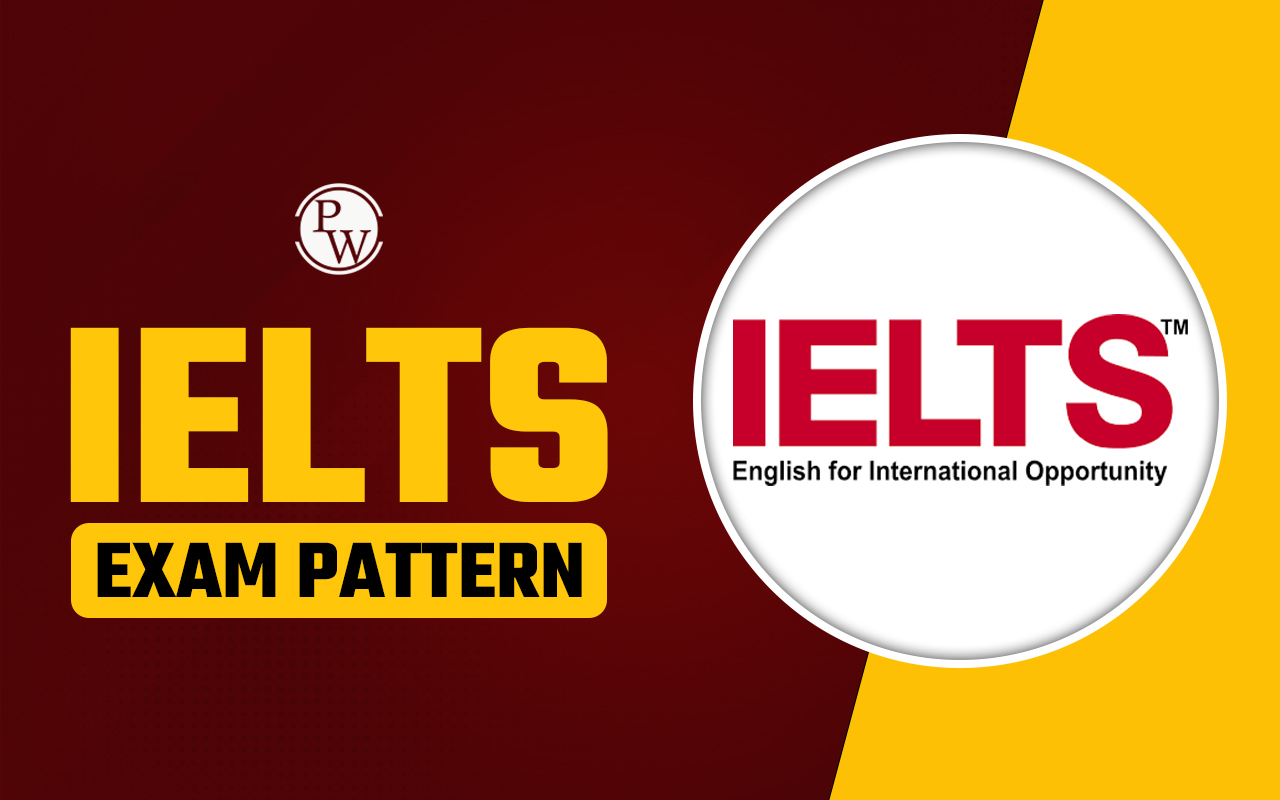
Unlikely Boomtowns Reading Answers: The IELTS Reading section tests a candidate’s ability to understand and interpret passages on different topics. “Unlikely Boomtowns IELTS Reading Answers” is one such topic that frequently appears in the test. This passage explores the rise of smaller cities, also known as Second Cities, which are growing rapidly due to factors like better transport, affordable living, and shifting work trends.
In this guide, we provide a sample passage along with answers to help IELTS aspirants practice efficiently. The question types in this IELTS Reading passage include Multiple Choice Questions and Summary Completion. Practicing these will improve reading comprehension skills and help candidates locate answers quickly. Read till the end to get a better understanding of the “Unlikely Boomtowns Reading Answers” passage.
Unlikely Boomtowns Reading Answers Passage
Unlikely Boomtowns: The World's Hottest Cities
-
Unlikely boomtowns are large cities like London, New York and Tokyo that dominate our imaginations. People usually go there to build their fortune, fame and future. These cities have control over their national economies and politics. The last 50 years has been the best time for them. The number of cities with more than 10 million people grew to 20 from just 2. But with all respect to the sci-fi novel writers who have predicted a future of urban giants, their day is over. The population growth rate within a megacity has slowed from more than 8% in the 1980s to 4% over the last 5 years, and these numbers are expected to be static for the next 25 years.
-
In a few years, more people will live in cities than in small places for the first time in human history. But increasingly, the urban core itself is becoming smaller. Almost 50% of the city dwellers in the world live in metropolises with fewer than 5 lakh residents. Second Cities or exurbs, residential areas outside the cities are booming. Between 2000 and 2015, the world’s smallest cities (with under half a million people) will grow by 23%, while the next smallest (1 to 5 million people) will grow by 27%. This trend is because of the dramatic shifts in the global real-estate bubble, increase in international migration, cheaper transport, new technologies, and the fact that the boomers are reaching retirement age.
-
The rise of Second Cities has begun naturally from the earlier success of the megacities. In the 1990s, megacities expanded as global markets did. This happened particularly in cities with high-tech or ‘knowledge-based’ industries like finance. Companies offered bigger bonuses, bankers grew richer and the prices of real estate in the world’s most desired cities soared. The result of this was something called ‘gated regions’ as said by demographer William Frey of the Washington-based Brookings, where cities and the surrounding areas became unaffordable for everyone except the rich. After a city reaches a certain size economically, its productivity starts to come down, says Mario Pezzini, head of the regional-competitiveness division of the OECD. He puts the breaking point at about 6 million people, after which expenses, travel times and the occasional chaos lead to a situation where the city centre may be a great place (only for the rich) and the outlying areas become difficult to live and work in’.
-
One reaction to this phenomenon is further sprawl in prices in the urban core and traditional suburbs. This drives people to distant exurbs with extreme commutes into big cities. As Frey notes, in the major US metropolitan areas, average travelling times have increased two-fold over the last 15 years. Why does a small area become a booming Second City while another fails? The answer lies on whether a community has the money to exploit the forces pushing people and businesses out of the megacities. One key is good public transport connectivity, especially to commercial areas. Although a decade old, Goyang is South Korea’s fastest-growing city in part because it is thirty minutes by subway from Seoul.
-
Another reason for the growth of Second Cities is the decentralisation of work, driven greatly by new technologies. While financial deals are mostly done now in big capitals like New York and London than ever before, it is also clear that many booming service industries are going towards ‘Rising Urban Stars’ like Dubai, Montpellier and Cape Town. These places have not only improved their internet facilities, but often have technical institutes and universities that produce the talent that is populating growth industries.
Consider the urban decentralisation case study of Montpellier, France. Montpellier was like a big Mediterranean village until the 1980s, but one with a strong university, many beautiful villas and an IBM manufacturing unit. Once the high-speed train lines were built, Parisians began coming for weekend breaks. Some purchased houses, creating a critical mass of middle-class professionals who started taking advantage of flexible working systems to do 3 days in Paris, and 2 down South, where things seemed less pressured. Soon, big companies started looking at the area; a number of medical-technology and electronics companies came to town, and IBM put more investment into service businesses there. To cater to the immigrant professionals, the city began to build facilities: an opera house, a tram line to reduce cars in the city center. The result - ‘the city is now full of cosmopolitan business people. It’s a new society’, says French urban-planning expert Nacima Baron. -
This implies that Second Cities won’t stay the same. Indeed some countries are actively aiding their growth. For example, Italy is trying to create tourist hubs of towns close to each other with unique buildings and offering different yet complementary cultural activities. Decentralising the policy making power is providing the smaller cities more freedom than ever to shape their destinies. To all these cities: this is your era. Don’t blow it.
| IELTS Exam Important Links | |
|---|---|
| IELTS Reading Band Score | IELTS Listening Band Score |
| IELTS Speaking Band Score | IELTS Writing Band Score |
Unlikely Boomtowns Reading Answers Sample Questions
IELTS Reading Multiple Choice Questions (Q. 1-6)
1. What is the main argument of the passage?
A) Megacities will continue to grow at a rapid pace.
B) Second Cities are becoming more significant than megacities.
C) The population growth in cities is slowing due to economic crises.
D) Migration to rural areas will increase in the coming years.
2. According to the passage, what has contributed to the decline in megacity growth?
A) Poor urban planning and environmental issues
B) High living costs and increased travel time
C) Government restrictions on migration
D) Decreasing birth rates in cities
3. What does the passage suggest about real estate prices in megacities?
A) They have become more affordable for the middle class.
B) The prices have been falling due to economic downturns.
C) They have increased significantly, making cities unaffordable for many.
D) The prices have remained stable over the years.
4. Why did Montpellier become a fast-growing Second City?
A) The city built large commercial hubs attracting businesses.
B) Improved transportation encouraged people to move there.
C) It received major investments from international companies.
D) The city offered tax benefits to encourage migration.
5. How does technology contribute to the rise of Second Cities?
A) It allows industries to decentralize and relocate outside megacities.
B) It helps businesses in megacities expand further.
C) It creates more job opportunities in rural areas.
D) It slows down migration to smaller cities.
6. What is the purpose of the last paragraph?
A) To explain why megacities are declining in importance.
B) To highlight the economic problems of Second Cities.
C) To emphasize how governments are supporting smaller cities.
D) To show that Second Cities will soon become megacities.
IELTS Reading Summary Completion (Q. 7-13)
Complete the summary below. Choose ONE WORD ONLY from the passage for each answer.
The growth of (7) ______ is slowing down, while smaller urban areas, known as (8) ______, are experiencing rapid expansion. Several factors have contributed to this trend, including technological advancements, migration patterns, and rising (9) ______ prices in megacities. Many people are moving to smaller cities because of better (10) ______ and living conditions. One example of a successful Second City is (11) ______, which grew due to improved transport links and large company investments. Some countries' governments actively support these cities by developing (12) ______ and providing more (13) ______ power to local administrations.
Unlikely Boomtowns Reading Answers with Explanations
1. What is the main argument of the passage?
-
Answer: B) Second Cities are becoming more significant than megacities.
-
Location: Paragraph A
-
Reference: "But with all respect to the sci-fi novel writers who have predicted a future of urban giants, their day is over."
-
Explanation: The passage states that the dominance of megacities is declining, while smaller cities are growing, making Second Cities more important.
2. According to the passage, what has contributed to the decline in megacity growth?
-
Answer: B) High living costs and increased travel time.
-
Location: Paragraph C
-
Reference: "After a city reaches a certain size economically, its productivity starts to come down... expenses, travel times, and the occasional chaos lead to a situation where the city centre may be a great place (only for the rich) and the outlying areas become difficult to live and work in."
-
Explanation: High costs and long commutes make megacities less attractive, leading to their slow growth.
3. What does the passage suggest about real estate prices in megacities?
-
Answer: C) They have increased significantly, making cities unaffordable for many.
-
Location: Paragraph C
-
Reference: "Companies offered bigger bonuses, bankers grew richer, and the prices of real estate in the world’s most desired cities soared."
-
Explanation: The passage states that real estate prices in megacities have skyrocketed, making them unaffordable.
4. Why did Montpellier become a fast-growing Second City?
-
Answer: B) Improved transportation encouraged people to move there.
-
Location: Paragraph F
-
Reference: "Once the high-speed train lines were built, Parisians began coming for weekend breaks. Some purchased houses, creating a critical mass of middle-class professionals..."
-
Explanation: The high-speed train made it easier for people to commute, leading to growth in Montpellier.
5. How does technology contribute to the rise of Second Cities?
-
Answer: A) It allows industries to decentralize and relocate outside megacities.
-
Location: Paragraph E
-
Reference: "Another reason for the growth of Second Cities is the decentralisation of work, driven greatly by new technologies."
-
Explanation: Technology enables industries to move to smaller cities, leading to their growth.
6. What is the purpose of the last paragraph?
-
Answer: C) To emphasize how governments are supporting smaller cities.
-
Location: Paragraph G
-
Reference: "Some countries are actively aiding their growth... Decentralising the policy-making power is providing the smaller cities more freedom than ever to shape their destinies."
-
Explanation: The passage highlights how governments are helping Second Cities grow by giving them more control and investment.
7. The growth of
-
Answer: megacities
-
Location: Paragraph A
-
Reference: "The population growth rate within a megacity has slowed from more than 8% in the 1980s to 4% over the last 5 years."
-
Explanation: The passage mentions that megacity growth is slowing down.
8. While smaller urban areas, known as
-
Answer: Second Cities
-
Location: Paragraph B
-
Reference: "Second Cities or exurbs, residential areas outside the cities are booming."
-
Explanation: The passage identifies Second Cities as the rapidly growing smaller urban areas.
9. Are experiencing rapid expansion. Several factors have contributed to this trend, including technological advancements, migration patterns, and rising
-
Answer: real-estate
-
Location: Paragraph C
-
Reference: "The prices of real estate in the world’s most desired cities soared."
-
Explanation: The passage explains that rising real estate prices push people toward smaller cities.
10. Many people are moving to smaller cities because of better
-
Answer: Transportation
-
Location: Paragraph E
-
Reference: "One key is good public transport connectivity, especially to commercial areas."
-
Explanation: The passage states that good transportation makes Second Cities attractive.
11. One example of a successful Second City is
-
Answer: Montpellier
-
Location: Paragraph F
-
Reference: "Montpellier was like a big Mediterranean village until the 1980s... Once the high-speed train lines were built, Parisians began coming."
-
Explanation: Montpellier is given as an example of a Second City that grew due to transport improvements.
12. Governments in some countries are actively supporting these cities by developing
-
Answer: tourist
-
Location: Paragraph G
-
Reference: "Italy is trying to create tourist hubs of towns close to each other with unique buildings."
-
Explanation: The passage states that tourism development is a strategy to boost Second Cities.
13. And providing more
-
Answer: policy
-
Location: Paragraph G
-
Reference: "Decentralising the policy-making power is providing the smaller cities more freedom."
-
Explanation: The passage states that giving more policy-making power helps Second Cities grow.
Also Read:
- Should You Use All Capital Letters in the IELTS Listening and Reading Tests
- IELTS Reading Mistakes
- How to Improve IELTS Reading Score
- How to Manage Time in IELTS Reading
Guidance of PW IELTS
Physics Wallah offers multiple online IELTS courses for all students. Follow the IELTS pages to better prepare for the exam.
| What is IELTS Exam? | Documents Required for IELTS Registration |
| IELTS exam eligibility requirements | IELTS Exam Fees |
| IELTS test results | IELTS Exam Pattern |
Unlikely Boomtowns Reading Answers FAQs
What are Second Cities?
Why is the growth of megacities slowing down?
How does technology contribute to the rise of Second Cities?
What role does transportation play in the success of Second Cities?
How are governments supporting the growth of Second Cities?














